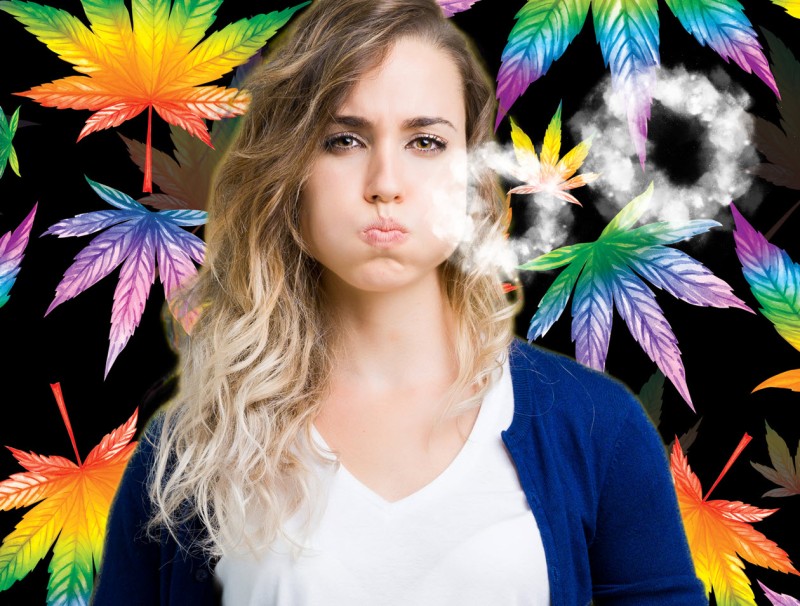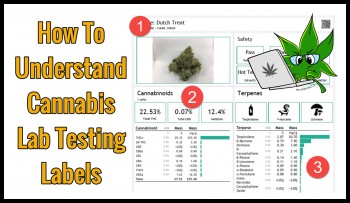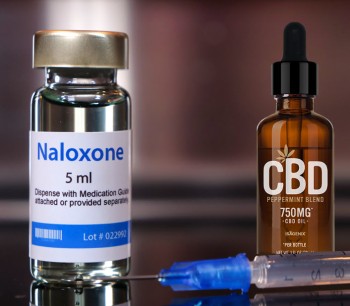
Numerous individuals may advise you to "HOLD IT, HOLD IT" when referring to cannabis smoke before exhaling, suggesting that doing so enhances the impact of your toke. This advice is rooted in the belief that holding the smoke in for a longer duration allows your body more time to absorb cannabinoids through the alveoli, the air sacs in your lungs.
However, despite the apparent logic behind this notion, scientific evidence does not substantiate the claim. Contrary to popular belief, the heightened effect you may experience when holding in smoke is unrelated to increased cannabinoid absorption.
Why Prolonged Cannabis Smoke Retention Doesn't Heighten Your Experience
Some users argue that holding in cannabis smoke for an extended period enhances the overall impact, but the reality is that extended retention doesn't intensify the high. Over 90% of THC is absorbed instantly upon inhalation, rendering the length of time you hold in the smoke irrelevant. The perceived heightened effect is not a result of increased cannabinoid absorption but is, in fact, due to oxygen deprivation to the brain.
Extended smoke retention can induce a lightheaded feeling by depriving the brain of oxygen. The carbon monoxide and toxins from smoking and prolonged retention exacerbate this sensation. The longer you hold the smoke, the higher your heart rate becomes, pumping blood faster to compensate for low oxygen levels, creating the illusion of an enhanced experience.
Prolonged smoke retention also leads to the absorption of unwanted smoke and tars. Using joints and bongs and holding in the smoke allows tar to adhere to the lungs more effectively. Contrary to popular belief, holding in cannabis smoke for an extended period does not result in increased cannabinoid absorption; three seconds is sufficient for optimal absorption by the alveoli and transportation of cannabinoids into the bloodstream.
So, why might you feel a more pronounced high?
Holding your breath gives your lungs additional time to absorb THC, thereby intensifying the high. Scientific research has debunked many misconceptions about cannabis, and in this case, evidence supports the impact of extended breath-holding on the experience.
As you hold your breath, your heart rate increases, and to compensate for low oxygen levels, blood is pumped more rapidly. This, coupled with the absence of oxygen, triggers the body to produce adrenaline, contributing to an enhanced "high." The tingling sensation in the skin and face is a sign of oxygen depletion, often mistakenly associated with an increased high.
How to Experience a Greater High
If you seek an elevated high, the solution is straightforward: consume more cannabis. Opt for stronger strains, concentrates, or explore the realm of edibles for a different experience. However, exercise caution as edibles can be potent and affect you differently.
Consider vaping or dabbing concentrates, as these methods pose fewer health risks compared to traditional smoking. With no combustion, you avoid inhaling carbon monoxide, tar, and toxins. Vaping allows for a larger quantity of cannabis consumption without the negative effects of oxygen deprivation caused by carbon monoxide.
Concentrates, with their high THC levels, provide a more potent hit with the same volume of inhaled smoke, resulting in a stronger effect. Remember, in this context, "less is more"; the less time you hold the smoke in, the more opportunities you have to take additional hits.
In simple terms, the more hits you take, the higher you'll get.
The Risks of Prolonged Smoke Retention
While the belief in the benefits of holding in cannabis smoke persists, it's crucial to acknowledge the potential risks associated with this widely practiced but misunderstood technique. First and foremost, prolonged smoke retention can result in oxygen deprivation to the brain, inducing a lightheaded feeling. This discomfort stems from the body's response to inadequate oxygen levels and serves as a signal that holding in smoke for extended durations may not be a harmless practice.
Another significant risk is the escalation of heart rate. Holding in smoke prompts the heart to pump blood more rapidly, attempting to compensate for the reduced oxygen supply. While this may contribute to the illusion of an enhanced experience, it poses potential dangers, particularly for individuals with underlying cardiovascular conditions. The pursuit of a heightened high through extended smoke retention should be approached with caution, considering the potential cardiovascular implications of such a practice.
Moreover, the accumulation of harmful substances adds a layer of concern. Prolonged smoke retention allows not only cannabinoids but also unwanted smoke and tars to be absorbed by the lungs. This raises red flags regarding long-term respiratory health. Using joints and bongs and holding in the smoke increases the likelihood of these harmful substances adhering to the lungs, potentially contributing to respiratory issues over time. Recognizing these risks underscores the importance of informed and responsible cannabis consumption practices, steering individuals away from potentially detrimental habits in pursuit of an enhanced experience.
Elevating Your Experience - Beyond Smoke Retention
In the quest for an enhanced cannabis experience, it's essential to explore alternative avenues that transcend the outdated practice of prolonged smoke retention. Embracing a holistic approach to cannabis consumption opens the door to a spectrum of possibilities that not only deliver a more robust high but also prioritize health and well-being.
One strategic move is opting for potent cannabis strains and concentrates. These options offer a higher concentration of THC, providing a more intense and immediate effect without the need for prolonged smoke retention. Additionally, the controlled and precise dosing inherent in these products allows users to tailor their experience to their preferences while minimizing potential health risks associated with traditional smoking methods.
Venturing into the realm of edibles offers another dimension to the cannabis experience. Edibles provide a unique and often more prolonged high compared to inhalation methods. However, it's crucial to approach edibles with caution, understanding their potency and potential delayed onset to avoid overconsumption. This alternative not only diversifies the ways individuals can enjoy cannabis but also eliminates the need for extended smoke retention, promoting a safer and more enjoyable consumption experience.
For those prioritizing their respiratory health, considering vaping or dabbing concentrates proves to be a wise choice. These methods eliminate the combustion process, reducing the inhalation of harmful substances like carbon monoxide and tar. With a focus on harm reduction, vaping enables users to enjoy a larger quantity of cannabis without compromising oxygen levels, providing an alternative route to achieving a heightened high. In essence, embracing these alternatives not only enhances the overall cannabis experience but also aligns with contemporary approaches that prioritize both enjoyment and well-being.
Bottom Line
The common belief that holding in cannabis smoke intensifies the high by allowing for increased cannabinoid absorption is debunked by scientific evidence. Prolonged smoke retention poses risks such as oxygen deprivation, elevated heart rate, and the absorption of harmful substances. Embracing alternatives, such as potent strains, concentrates, and edibles, offers a safer and more enjoyable route to an enhanced cannabis experience. Vaping and dabbing concentrates provide a harm-reduction approach, eliminating the need for prolonged smoke retention and prioritizing respiratory health. Ultimately, a nuanced understanding of consumption methods, coupled with responsible choices, leads to a more fulfilling and health-conscious cannabis journey.






